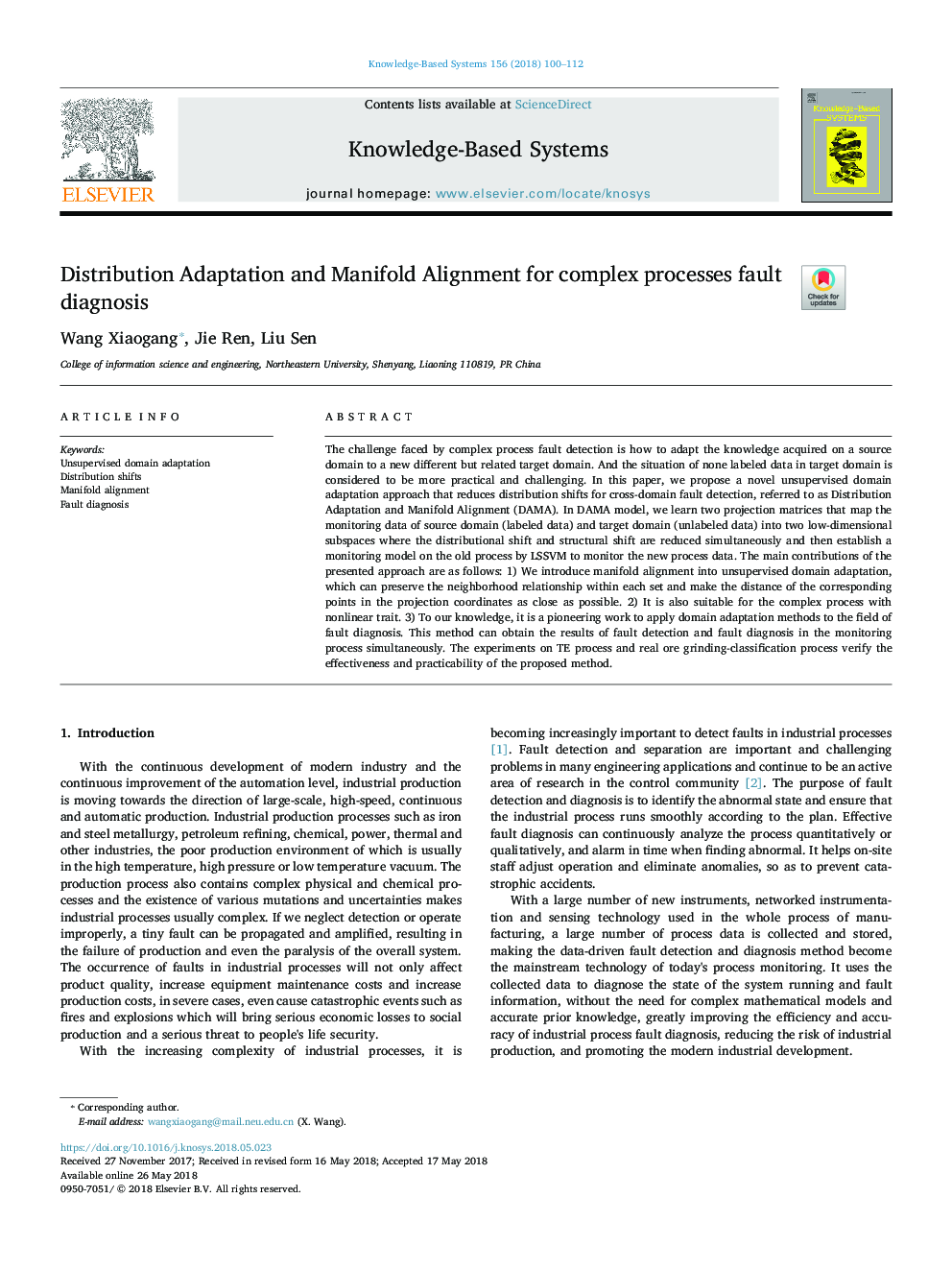| Article ID | Journal | Published Year | Pages | File Type |
|---|---|---|---|---|
| 6861315 | Knowledge-Based Systems | 2018 | 13 Pages |
Abstract
The challenge faced by complex process fault detection is how to adapt the knowledge acquired on a source domain to a new different but related target domain. And the situation of none labeled data in target domain is considered to be more practical and challenging. In this paper, we propose a novel unsupervised domain adaptation approach that reduces distribution shifts for cross-domain fault detection, referred to as Distribution Adaptation and Manifold Alignment (DAMA). In DAMA model, we learn two projection matrices that map the monitoring data of source domain (labeled data) and target domain (unlabeled data) into two low-dimensional subspaces where the distributional shift and structural shift are reduced simultaneously and then establish a monitoring model on the old process by LSSVM to monitor the new process data. The main contributions of the presented approach are as follows: 1) We introduce manifold alignment into unsupervised domain adaptation, which can preserve the neighborhood relationship within each set and make the distance of the corresponding points in the projection coordinates as close as possible. 2) It is also suitable for the complex process with nonlinear trait. 3) To our knowledge, it is a pioneering work to apply domain adaptation methods to the field of fault diagnosis. This method can obtain the results of fault detection and fault diagnosis in the monitoring process simultaneously. The experiments on TE process and real ore grinding-classification process verify the effectiveness and practicability of the proposed method.
Related Topics
Physical Sciences and Engineering
Computer Science
Artificial Intelligence
Authors
Wang Xiaogang, Jie Ren, Liu Sen,
